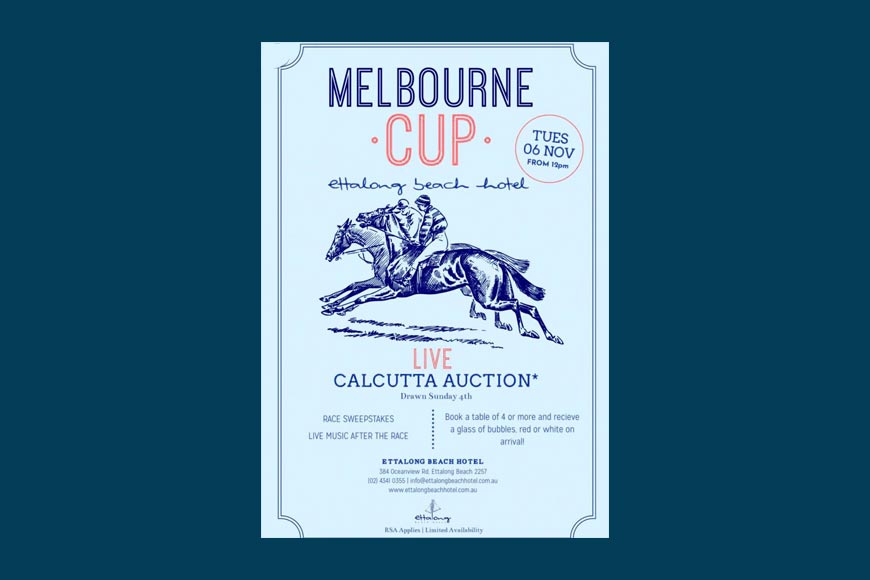‘Calcutta’ bidding technique at one of the leading horseracing events of the world!

Melbourne Cup is the biggest event in Australian calendar. It is the most famous annual Thoroughbred horse race of the world. The race is 3200-metre and conducted by the Victoria Racing Club on the Flemington Racecourse in Melbourne, Victoria. It started in 1861. In the 21st century, Melbourne Cup Day is celebrated with food, fashion and fun. During Melbourne Cup Day as part of the celebrations, bidding becomes an integral part. Each contestant begins in random order and can bid upon at anytime. Surprisingly, one such bidding technique used in horse races in Australia even today is called ‘Calcutta.’ The origin of ‘Calcutta’ is where the technique of bidding was first recorded by British Raj. As a city Calcutta may have changed its name to Kolkata but the name of this particular style of bidding remains the same.
According to Geoffrey Moorhouse, who wrote: ‘In a sense, the story of Calcutta is the story of India,’ Calcutta became the second capital of the British empire. After the Battle of Plassey, Calcutta became a global name and so it still has its fair share of influence across the globe. Since it’s hey days, the city has an auction named after it as ‘Calcutta’ in Australia. I came across this bidding name through the celebration of Melbourne Cup in Australia. But I have never heard of Calcutta Auction or ‘Calcutta’ while living in Kolkata. This term is associated with Melbourne Cup as an open auction, invoking horse race or golf tournament or similar sport contest involving multiple entrants. As per historical documents, Australia being a British colony once, retained the ‘Calcutta’ technique of bidding. The precise rules of a ‘Calcutta’ can vary from place to place but the technique remains same.
Today the most simple and common ‘Calcutta’ payout is 70 percent of the pool to the ‘owner’ of the winning tournament team, 30 percent to the ‘owner’ of the second-place tournament team. In 2018, The Kosciuszko Calcutta was held at Randwick Racecourse in Sydney. According to Racenet.com, ‘The auction prices Don’t Give A Damn was favourite for the $1.3 million feature. The ‘Calcutta’ was run in conjunction with a luncheon for NSW Business leaders and attracted a large crowd which included the likes of high-profile racing identities like Tom Waterhouse and Max Whitby. Racing NSW started the Calcutta pool with $125,000 and the total quickly grew when the auction got underway with $251 chance Ruthless Agent kicking off proceedings, selling for $1500.’
Nowadays software programs are used to apply odds and determine win-place-show amounts in large events. It is very interesting to see the guideline about ‘Calcutta’ from the Australian department of Fair trading and it says:
‘Calcutta’ follows the same method as a sweep up to the completion of the draw. On completion of the draw, an auction takes place where all ticket purchasers can bid for each participant. Players who were successful in the draw can choose between selling the participant and receiving half of the proceeds of the sale or retaining the participant by making the highest bid. The prize pool, which includes ticket sales and net auction proceeds is distributed to the winners.
It is really interesting to note how a part of my city is still celebrated in Australia among the best horse racing courses. For me, living so far away from the city I was born in and raised, the very word ‘Calcutta’ even as a bidding technique brings back so many memories on Melbourne Cup Day, one of the most prestigious horse races of the world.
Long live ‘Calcutta.’










